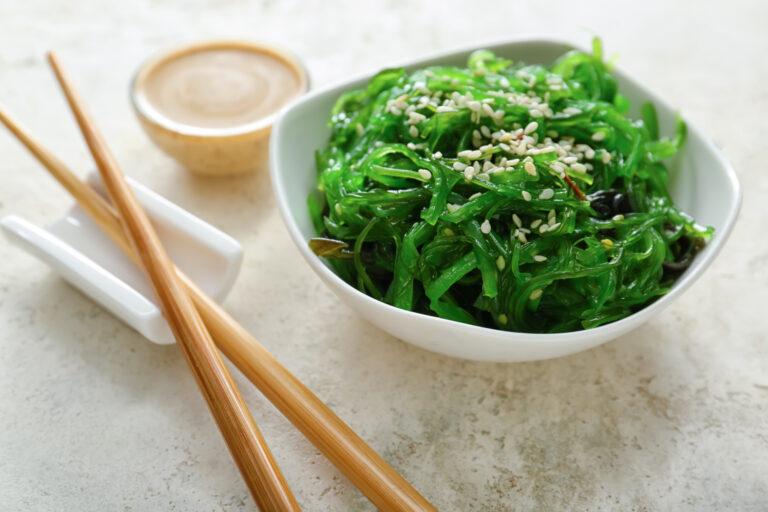Below are brief summaries of the news reports on algae consumption.
Fighting for food security
The EU's Aquaculture Advisory Council has recommended the promotion of seaweed aquaculture in Europe. The report highlights the benefits of increased seaweed cultivation, including a new source of biomass for food, feed, and industrial uses, as well as relevant ecosystem services like nutrient and carbon sinks and habitats for marine life. The report also emphasizes the ability of seaweed to correct the nutrient status in EU water bodies, in line with EU Water Framework Directive. The authors suggest that to expand seaweed production, the EU Commission needs to develop guidelines for member states on how to establish a legal framework for granting licenses to establish new and expand existing seaweed farms. Additionally, the AAC plans to produce a follow-up document that includes a list of species of interest that can be farmed in Europe, market opportunities for this kind of production, and the identification of the ecosystem services provided by seaweed aquaculture.
Sustainability vs. food safety risks
The world is facing a significant food security crisis, with 2 billion people suffering from moderate or severe food insecurity. The four pillars of food security are in danger due to the impact of climate change and other anthropogenic factors that are affecting the food system. To address this issue, novel foods such as seaweeds are being explored as a potential solution to increase food yields and prevent global food shortages. This systematic review assesses the microbiological, chemical, physical, and allergenic risks associated with seaweed consumption. The study found no significant hazards for microbiological, allergenic, and physical risks. However, algae can accumulate heavy metals, especially when harvested in polluted sites, which poses a potential chemical risk. Cultivating seaweeds in a controlled environment allows us to avoid this risk. Therefore, regular control is necessary on the finished products to monitor heavy metals levels. With the increasing consumption of algae worldwide, it is vital for food control authorities to establish safety levels to ensure that eating algae does not represent any risk to human health. The review concludes that novel foods like seaweeds have significant potential to meet the demand for macro and micronutrients while reducing the environmental impact of food production. However, it is crucial to ensure that these foods are safe for human consumption by monitoring and regulating their production and distribution.
FAO report on food safety guidance on seaweed
A new report released by the FAO and WHO also highlights the need for food safety guidance on seaweed. The report reviews current information on seaweed harvested from both wild stocks and aquaculture and recommends further discussion as well as international guidance. While morbidities and mortalities linked to the consumption of seaweeds are rare, the limited data raise concerns about certain hazards that may be present in seaweed. These include chemical, microbiological, physical, and allergenic hazards. The report also recommends collecting and evaluating seaweed consumption data at national and regional levels, monitoring seaweed food and feed products for safety hazards, and conducting a risk assessment to ascertain their public health significance. The production of seaweed has tripled in the past two decades, and global trade in seaweed and seaweed products amounted to USD 5.6 billion in 2019 alone. With the increasing demand for seaweed as a sustainable food source, it is essential to safeguard the production, processing, and utilization of seaweed for food and feed, while protecting the health of consumers. Following these recommendations could support the development of Codex guidelines or standards at the international level as well as regional and/or national legislation.
Iodine in seaweed
Scientists from the Norwegian Institute of Food, Fisheries, and Aquaculture Research have reviewed international research on iodine in brown algae. Brown algae, particularly kelp, is known to contain high levels of iodine, but the amount absorbed by our bodies and the effect of food preparation has been a topic of debate. The researchers found that bioavailability varies greatly, ranging from 31 to 90 percent depending on the species of algae and method used. High bioavailability was found in species like sugar kelp and tangle. Processing methods like boiling or blanching can eliminate between 10 to 94 percent of iodine, but the amount depends on the species and processing method used. The study also revealed knowledge gaps regarding how different chemical species of iodine affect absorption and little documentation on what happens inside our bodies when we consume seaweed. The Norwegian Food Safety Authority, European Food Safety Authority, and Norwegian Scientific Committee for Food and Environment have all requested more data on seaweed consumption's effects. The study concludes that more research is needed to understand bioavailability and processing methods to ensure safe, predictable products.
Fighting against antibiotic resistance
Teagasc, an Irish research organization, is exploring the potential of seaweed as a natural medicine to kill bacteria that can infect our hospitals or live in our food. Researchers are studying the Irish seaweed, kelp, to analyze its potential to kill bacteria, and compounds from it may potentially be used in the future as an antibiotic medicine for an infection. This research is crucial to protect against a future where 'superbugs' will become a significant danger for humans.

